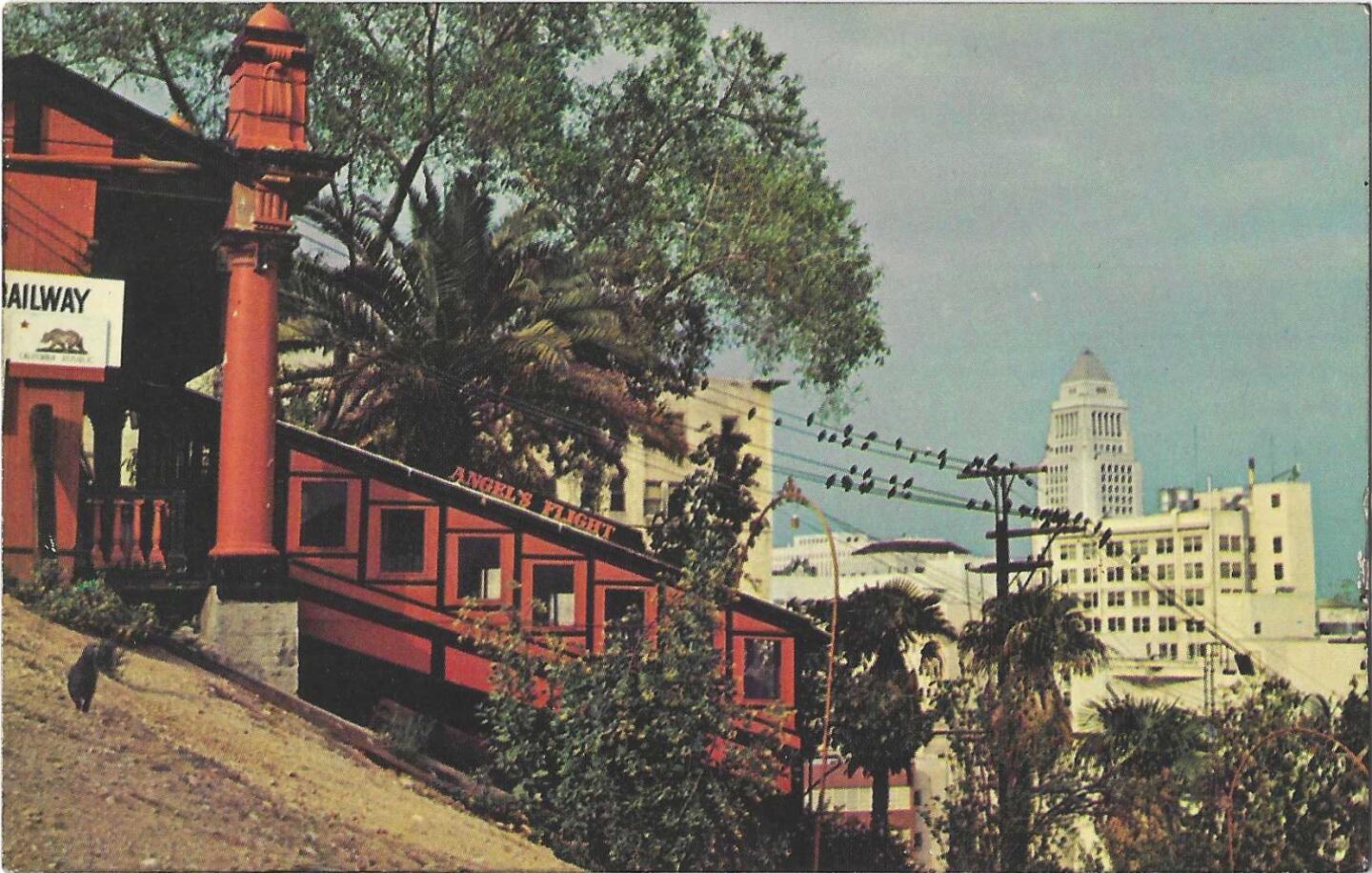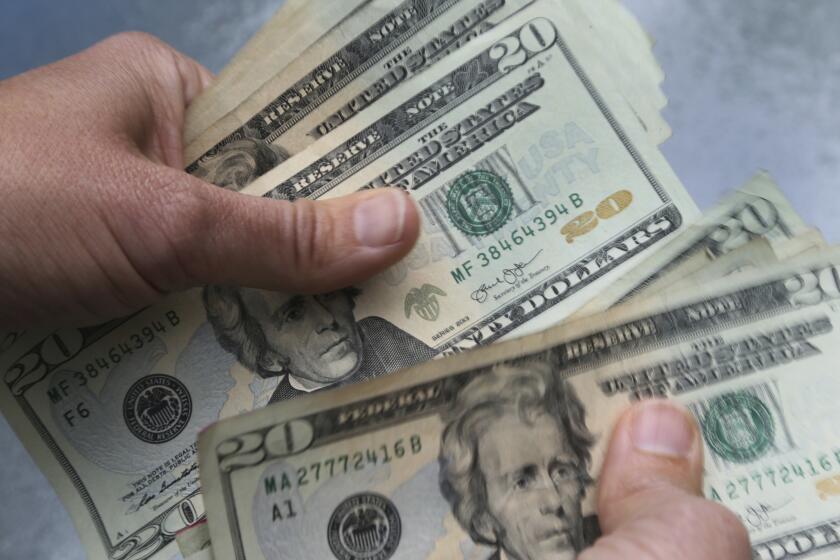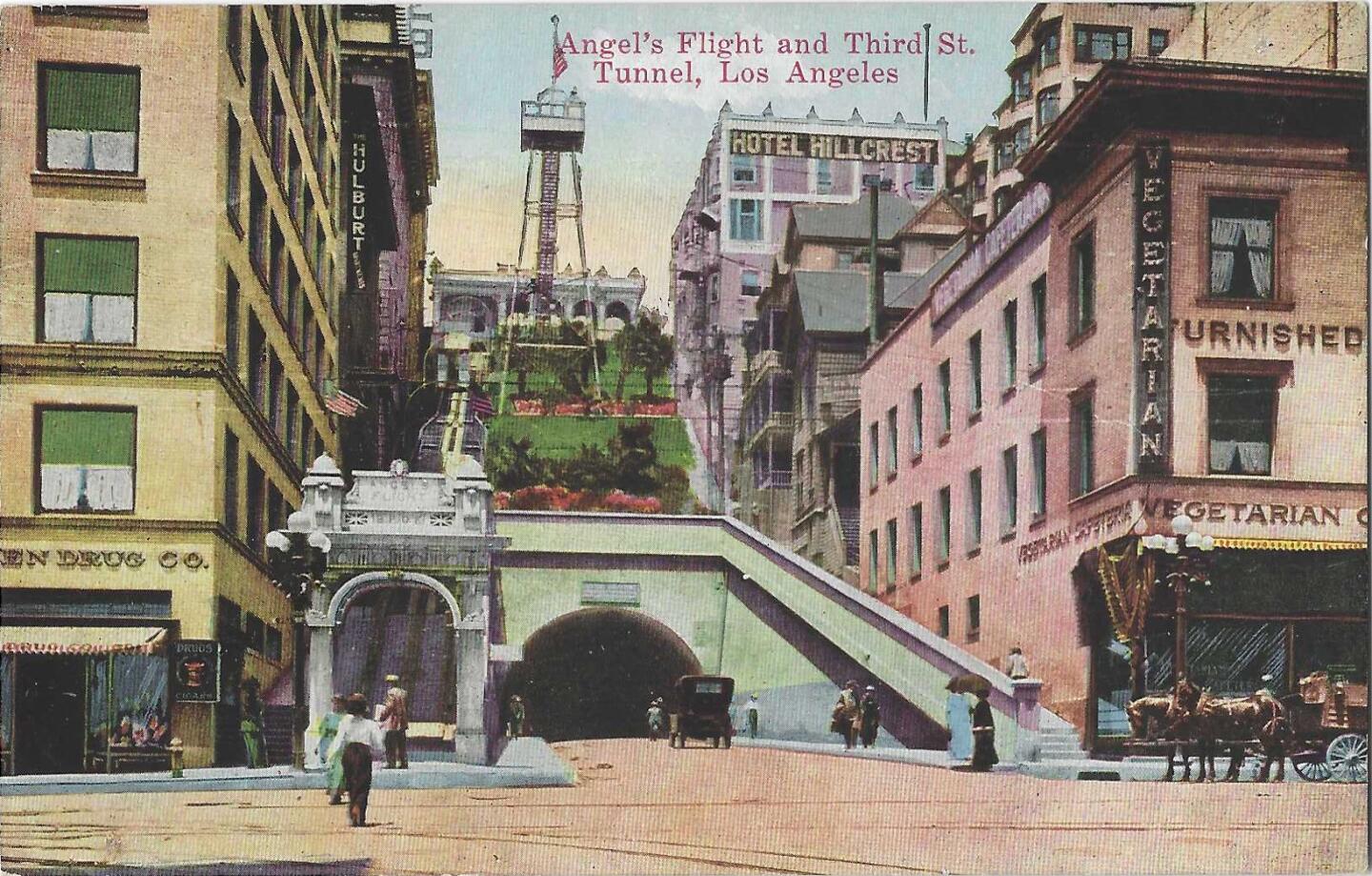
Horses and carriages, a vegetarian restaurant and a funicular railway. Another day on Hill Street. (Patt Morrison / Los Angeles Times)
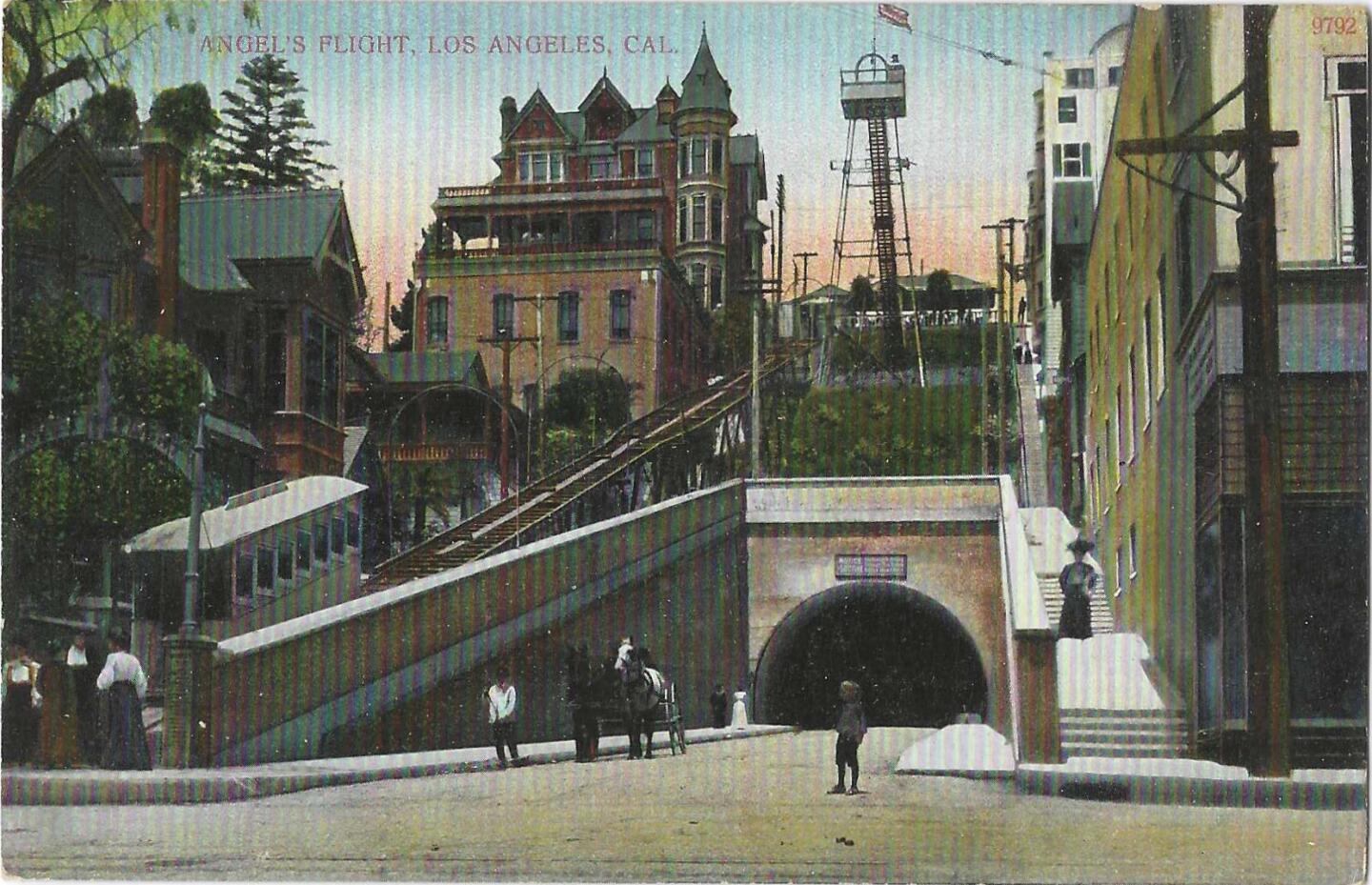
From Angels Flight, you could see the turreted Crocker Mansion, which later became the headquarters for the Elks. (Patt Morrison / Los Angeles Times)
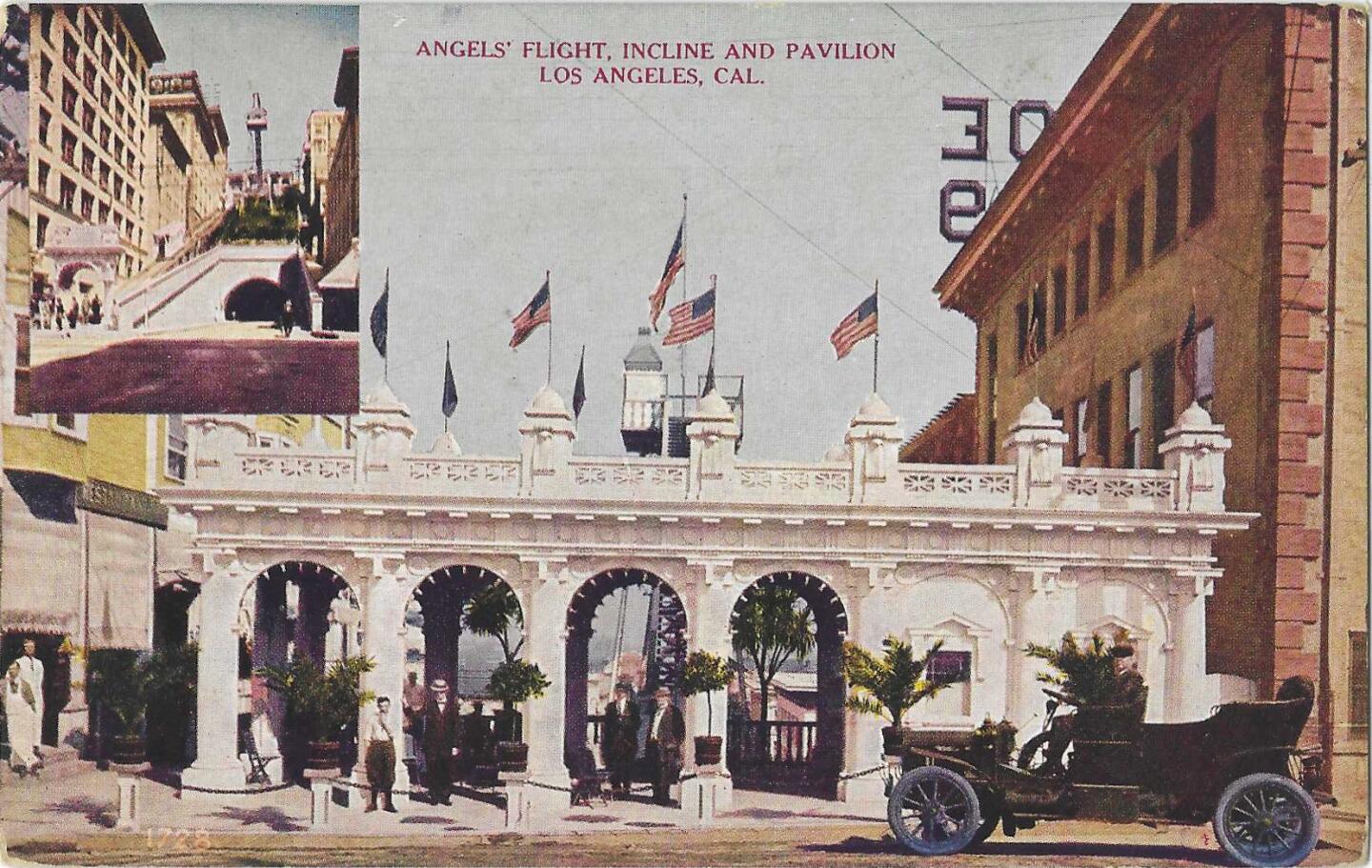
In its original location, the pavilion at the top of the Angels Flight railway included a colonnade. Today, the top of the hill is California Plaza, surrounded by skyscrapers. (Patt Morrison / Los Angeles Times)
Advertisement
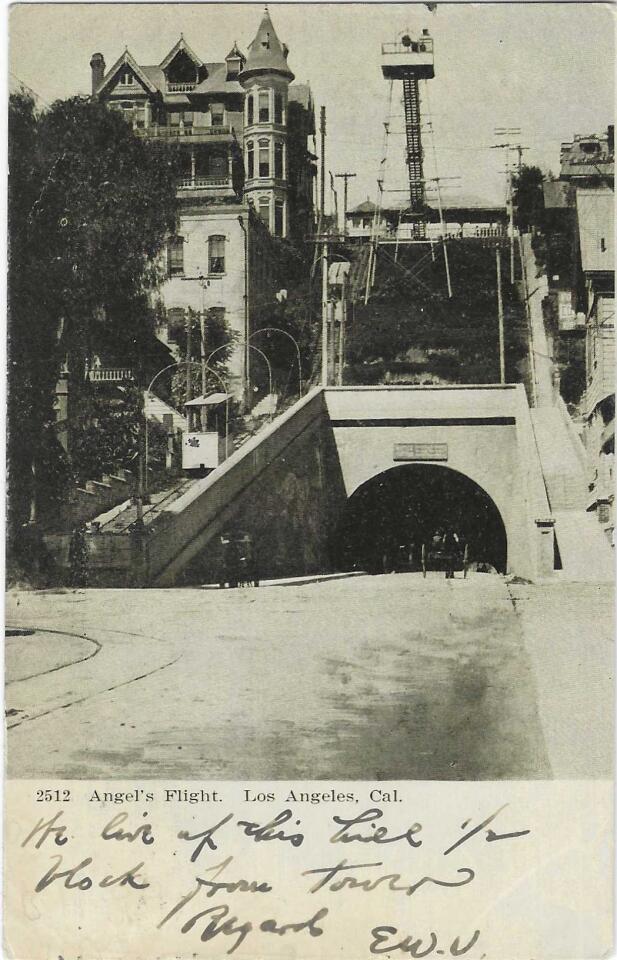
Whoever sent this postcard indicated that they lived up this hill “a half a block from town.” Bunker Hill would have been considered a suburb in 1906. (Patt Morrison / Los Angeles Times)
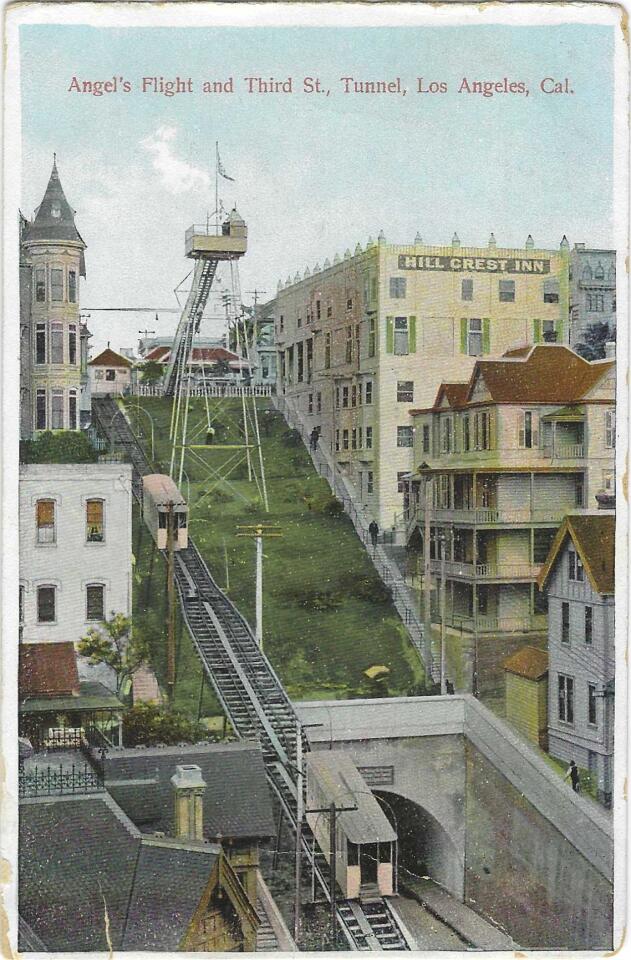
Notice the observation tower over the Third Street tunnel at Angels Flight. And the stairs to the right. There were around 300 steps, put in at the city’s insistence so people could get up and down the hill for free. (Patt Morrison / Los Angeles Times)
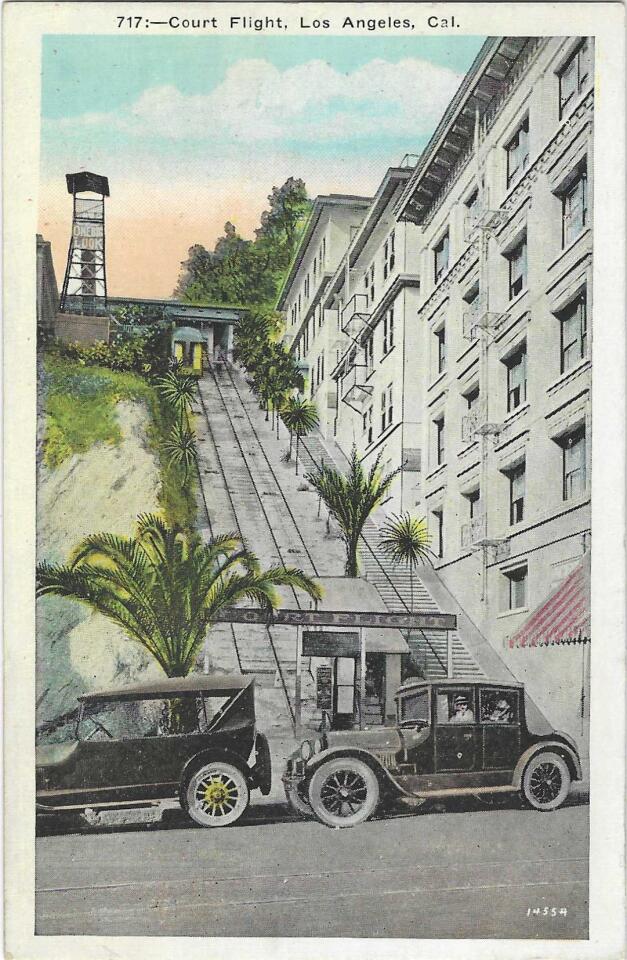
Court Flight downtown served the court buildings on Broadway. It was in disrepair when its remnants burned down in the 1940s. (Patt Morrison / Los Angeles Times)
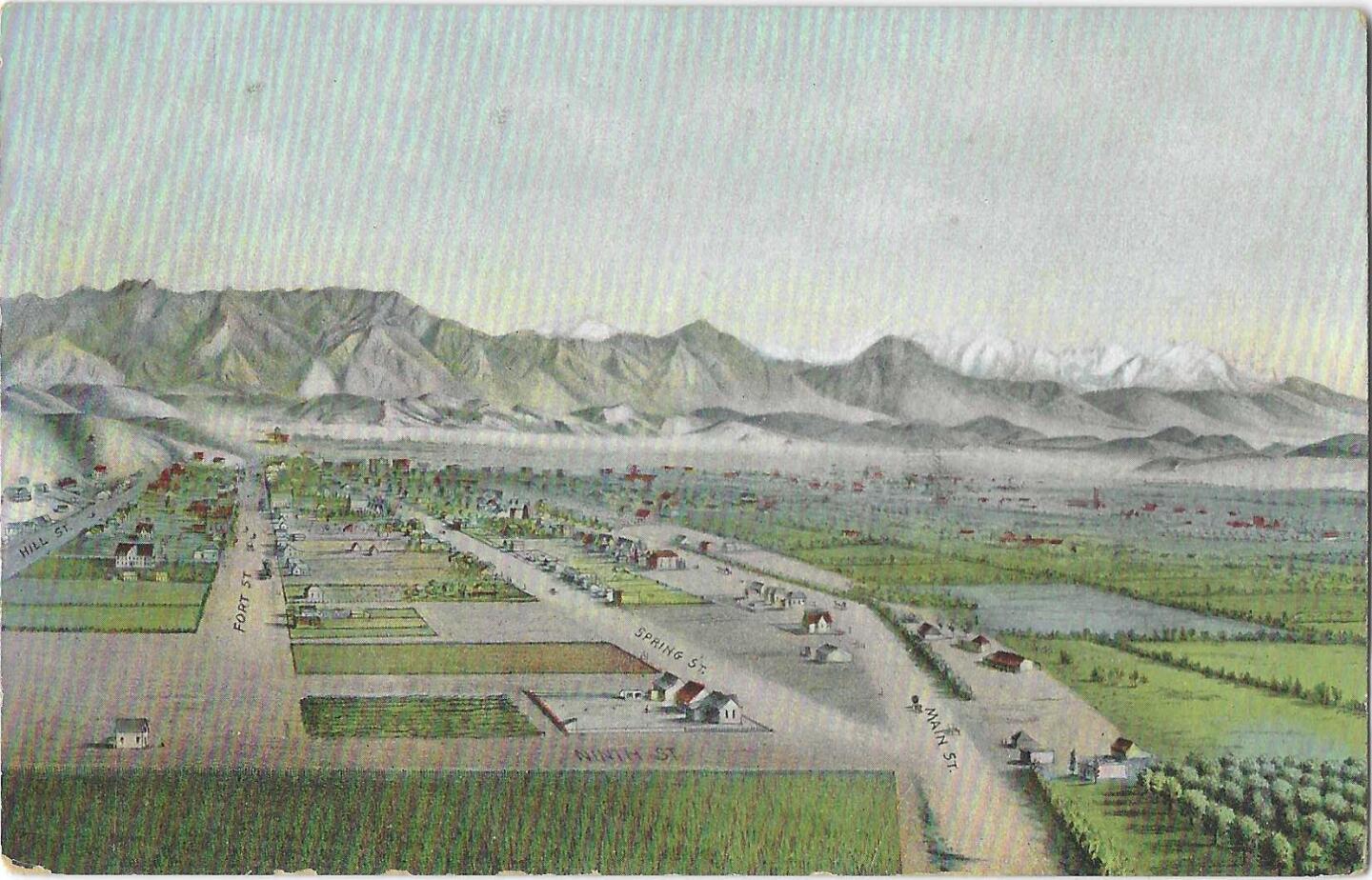
A view of downtown Los Angeles looking north shows the varied topography of Southern California. Flatlands, hills and mountains — perfect for funicular railways. (Patt Morrison / Los Angeles Times)
Advertisement
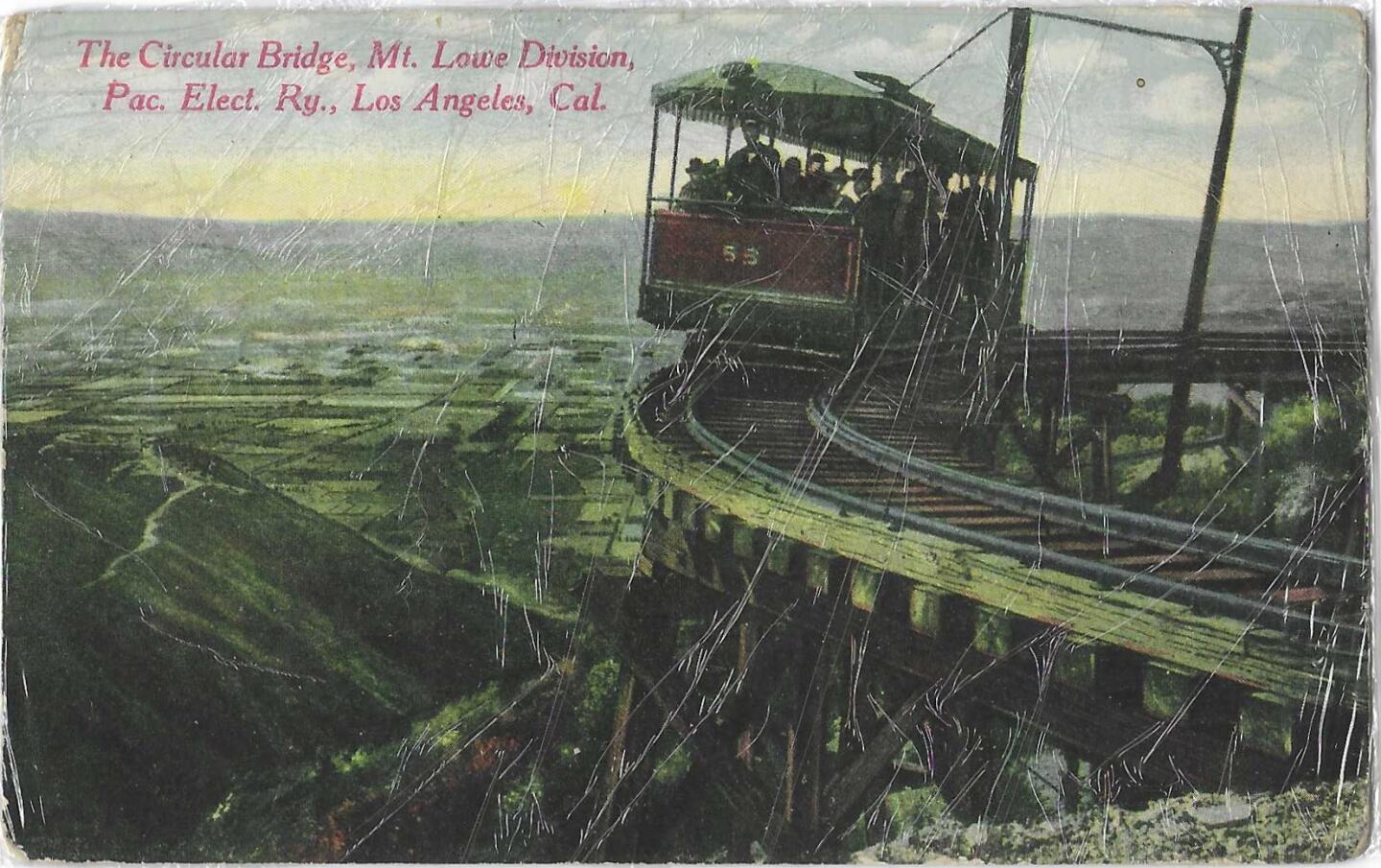
The circular bridge was one of many harrowing turns along the route to the resorts on what we now call Mt. Lowe. (Patt Morrison / Los Angeles Times)
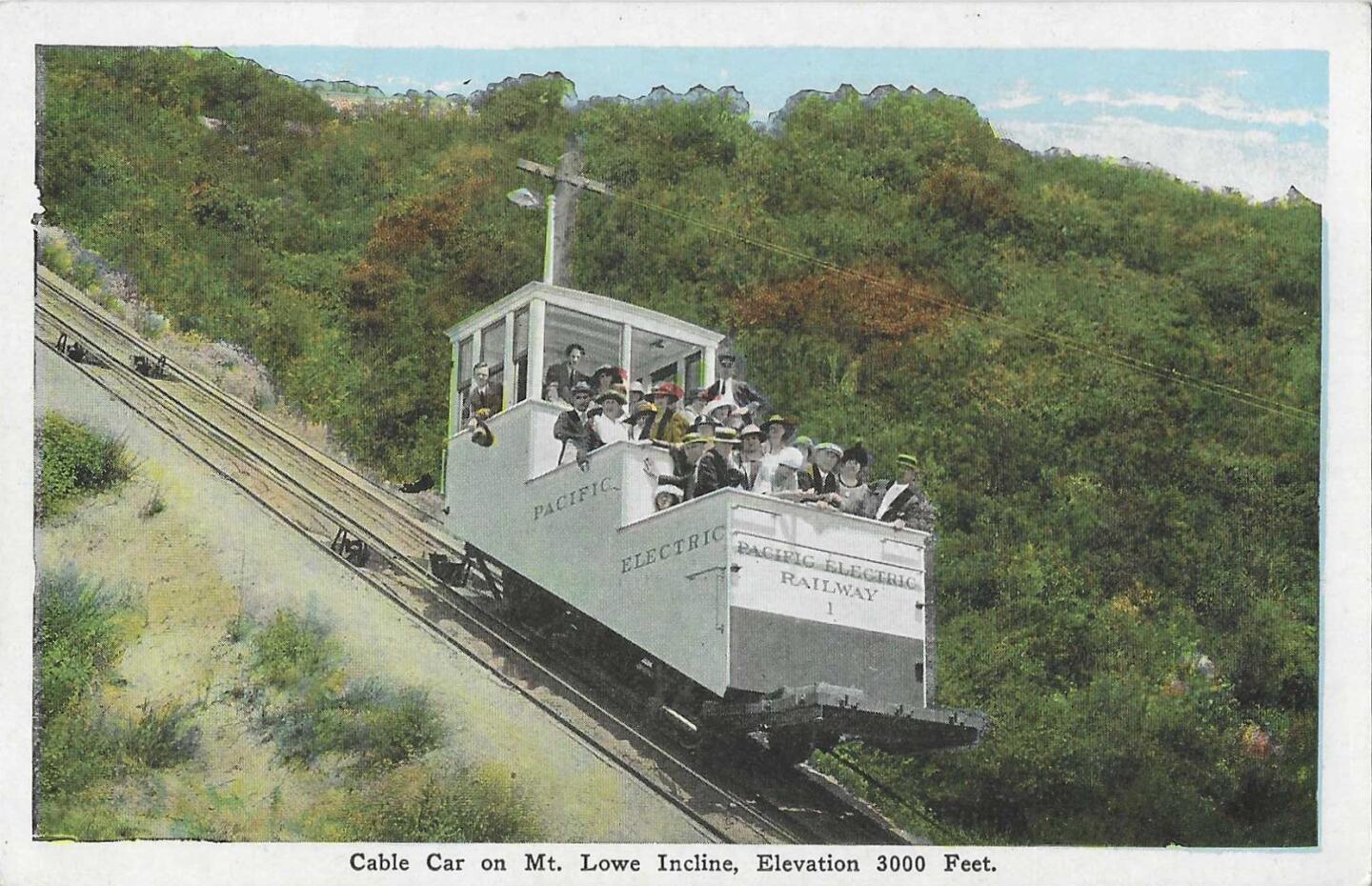
It was an open-air ride to get to the resort atop what is now known as Mt. Lowe. (Patt Morrison / Los Angeles Times)
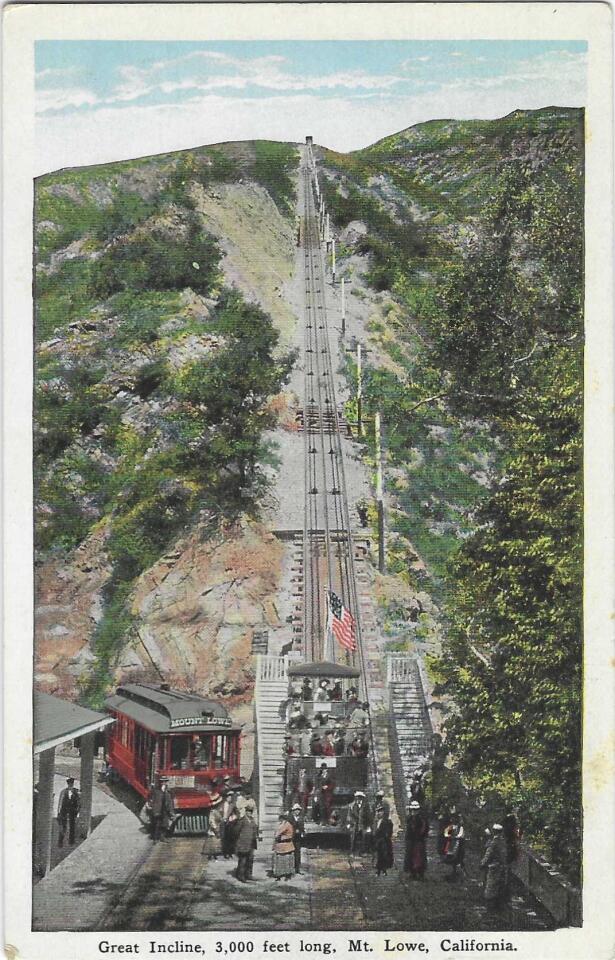
The ascent to Mt. Lowe from Altadena was about 3,000 feet. (Patt Morrison / Los Angeles Times)
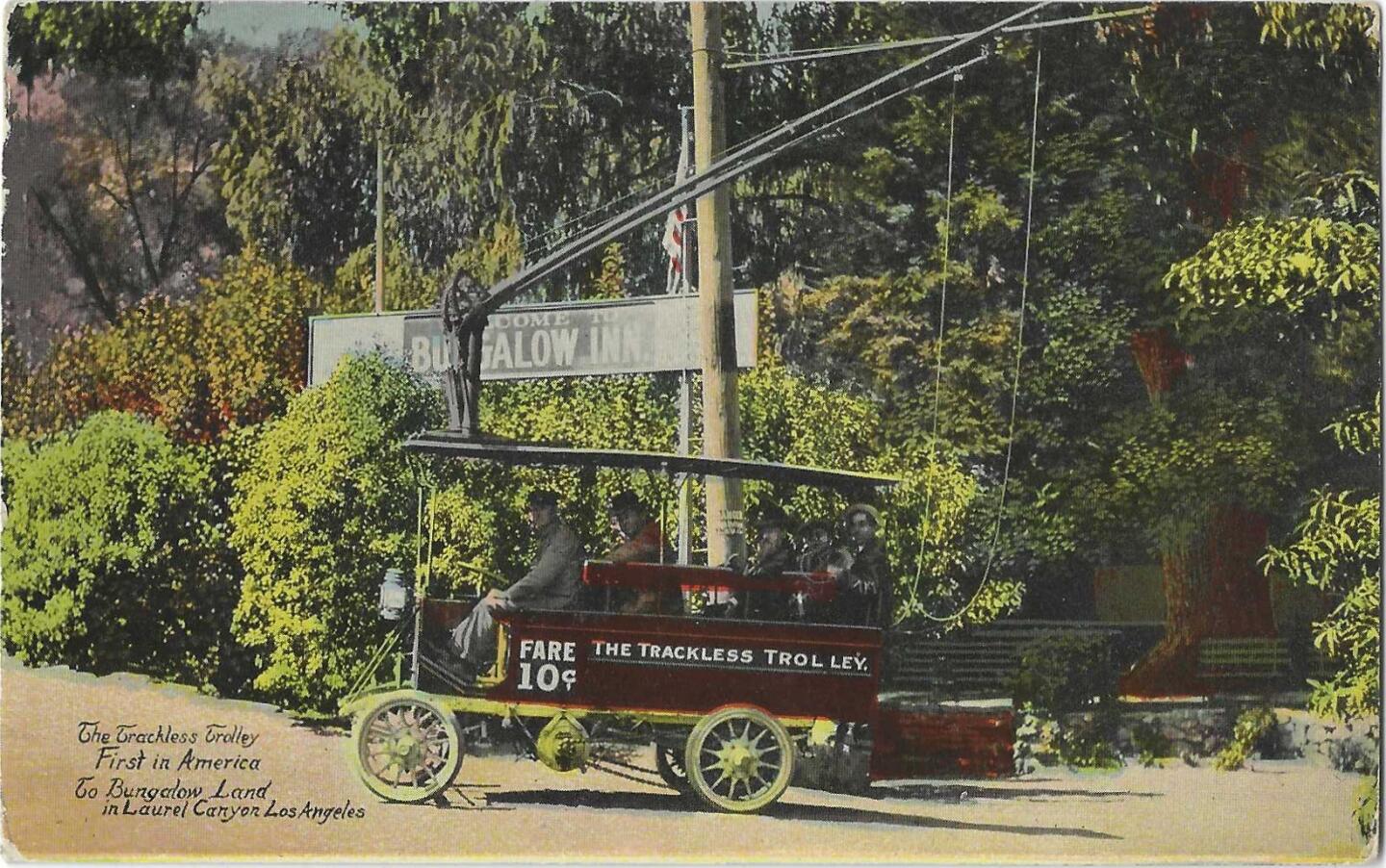
The Trackless Trolley took prospective property buyers through Laurel Canyon. (Patt Morrison / Los Angeles Times)
Advertisement
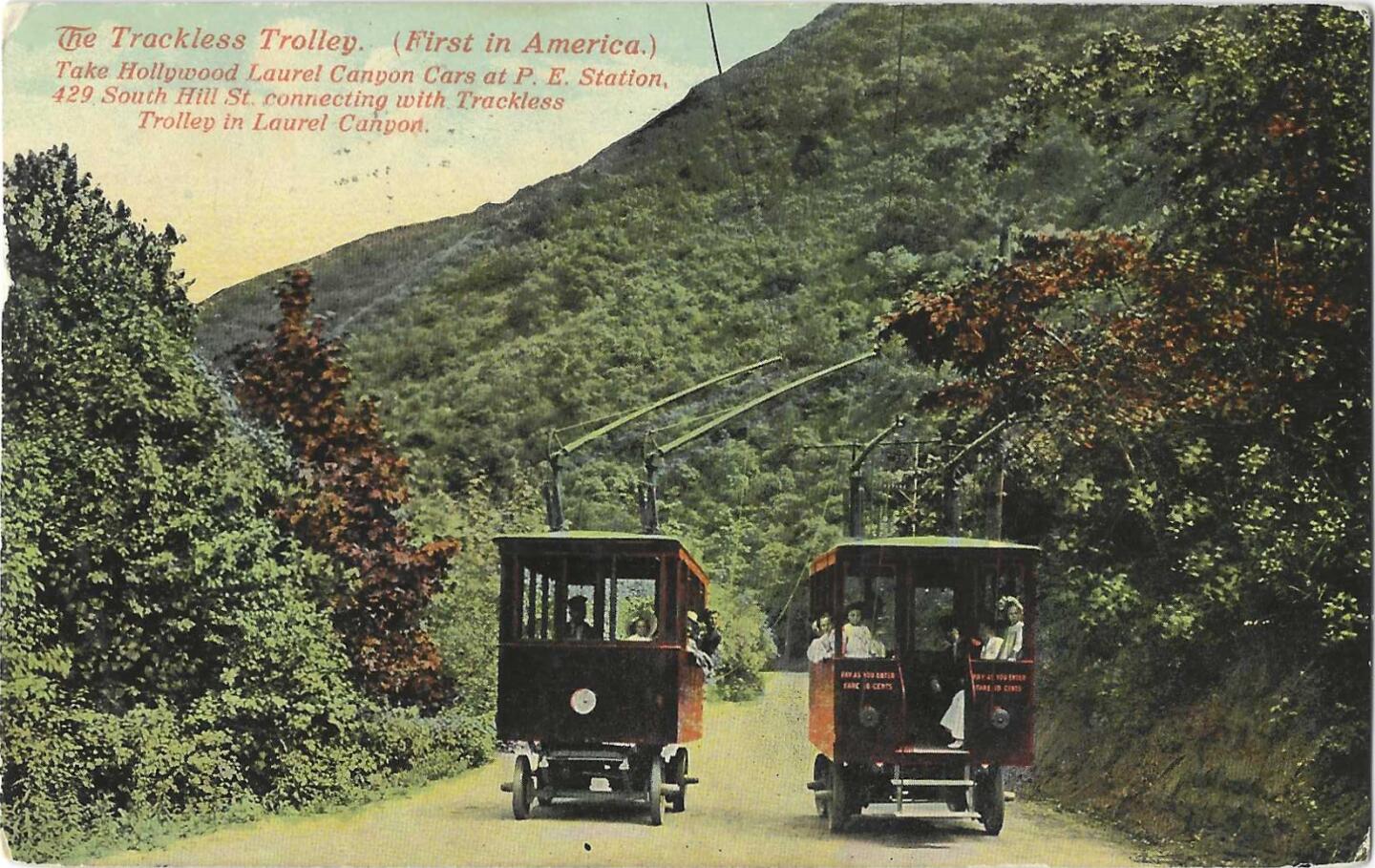
The person who mailed this postcard reports that the road on the Trackless Trolley in Laurel Canyon was good but “still rough riding.” (Patt Morrison / Los Angeles Times)
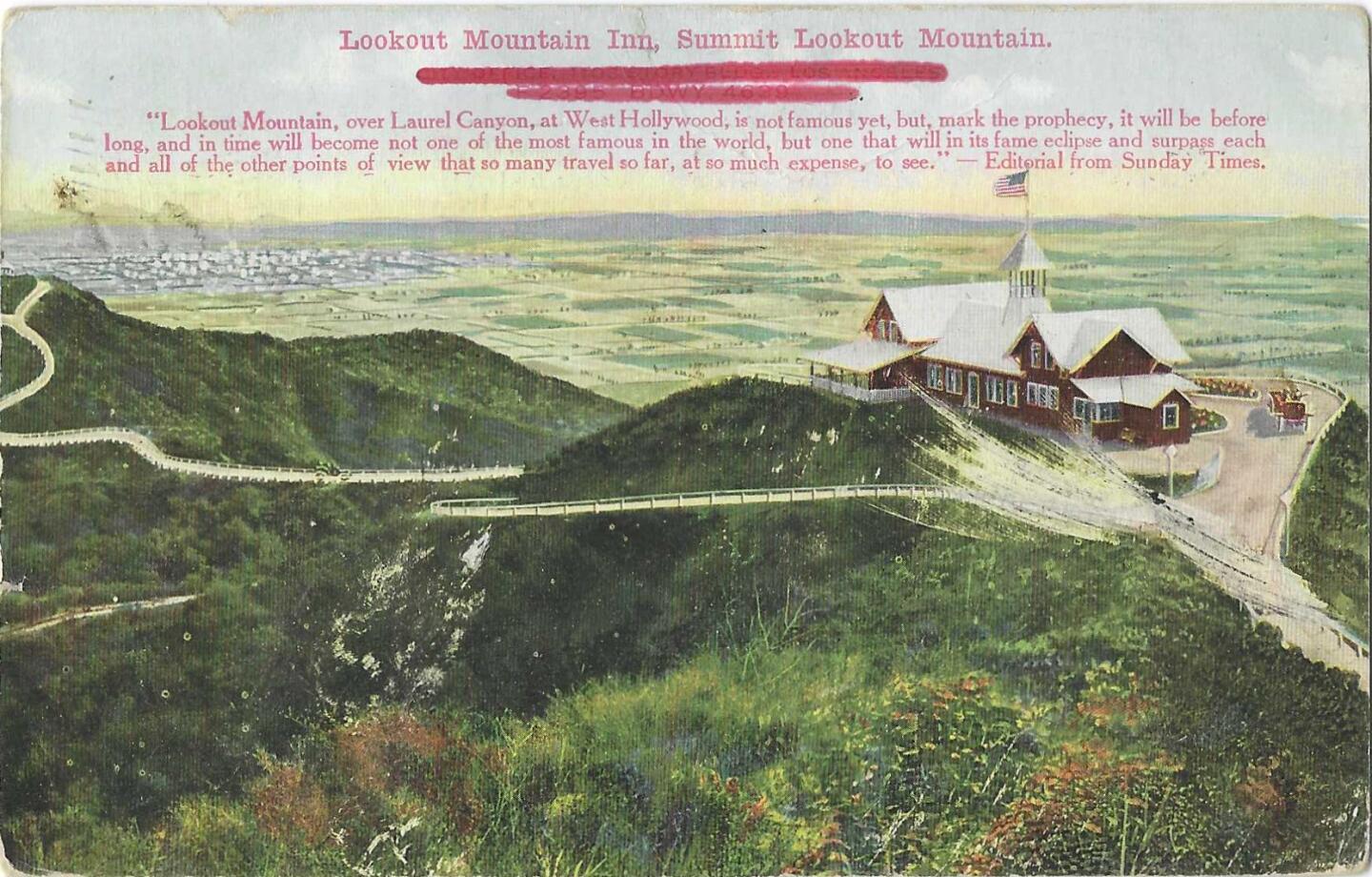
A postcard of the summit of Lookout Mountain — reached via the Laurel Canyon Trackless Trolley — quotes an L.A. Times editorial saying it wasn’t famous yet, but it sure would be. (Patt Morrison / Los Angeles Times)
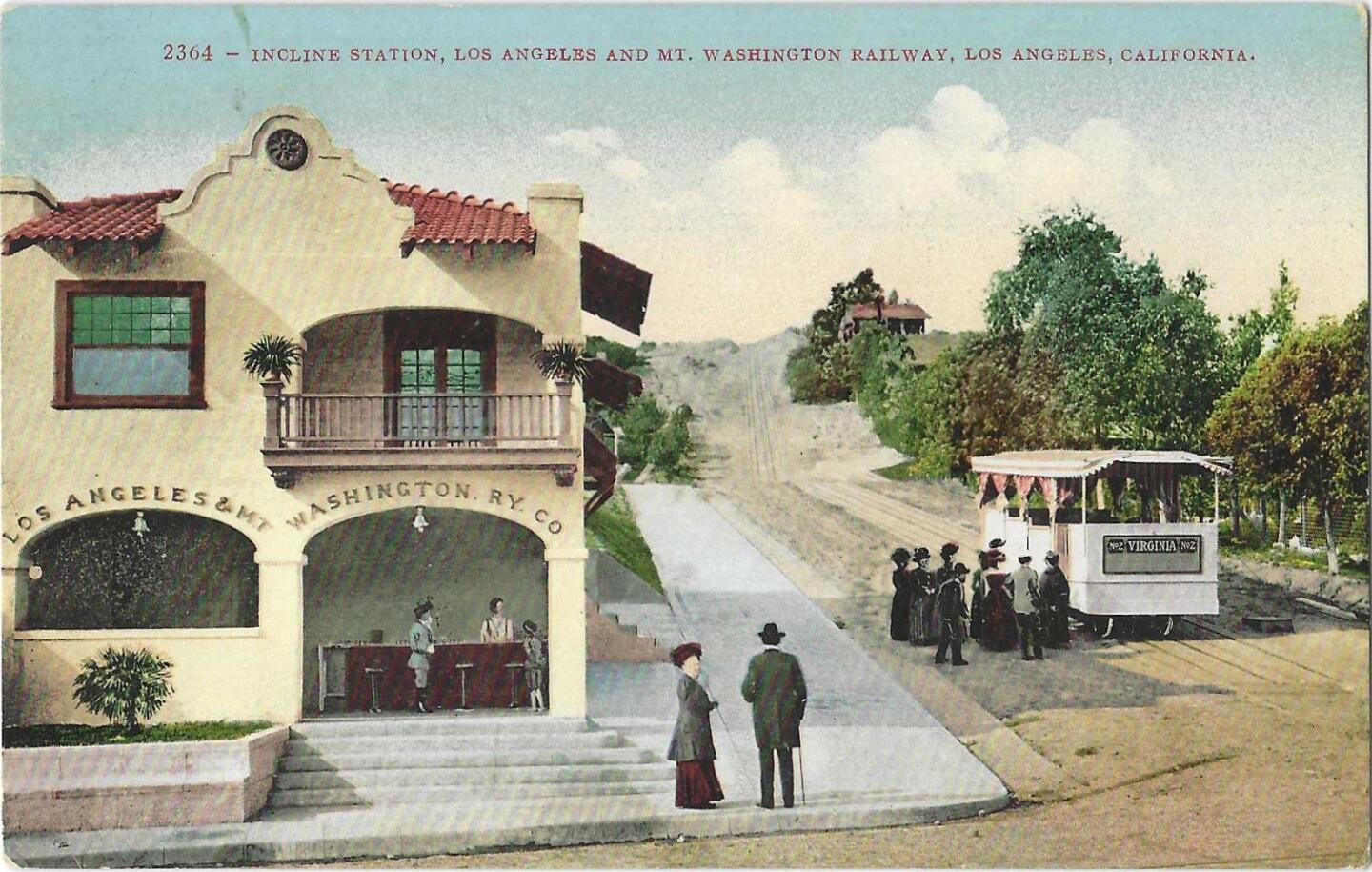
The Mt. Washington Railway station at the bottom of the hill was not far from where the Southwest Museum now stands. (Patt Morrison / Los Angeles Times)
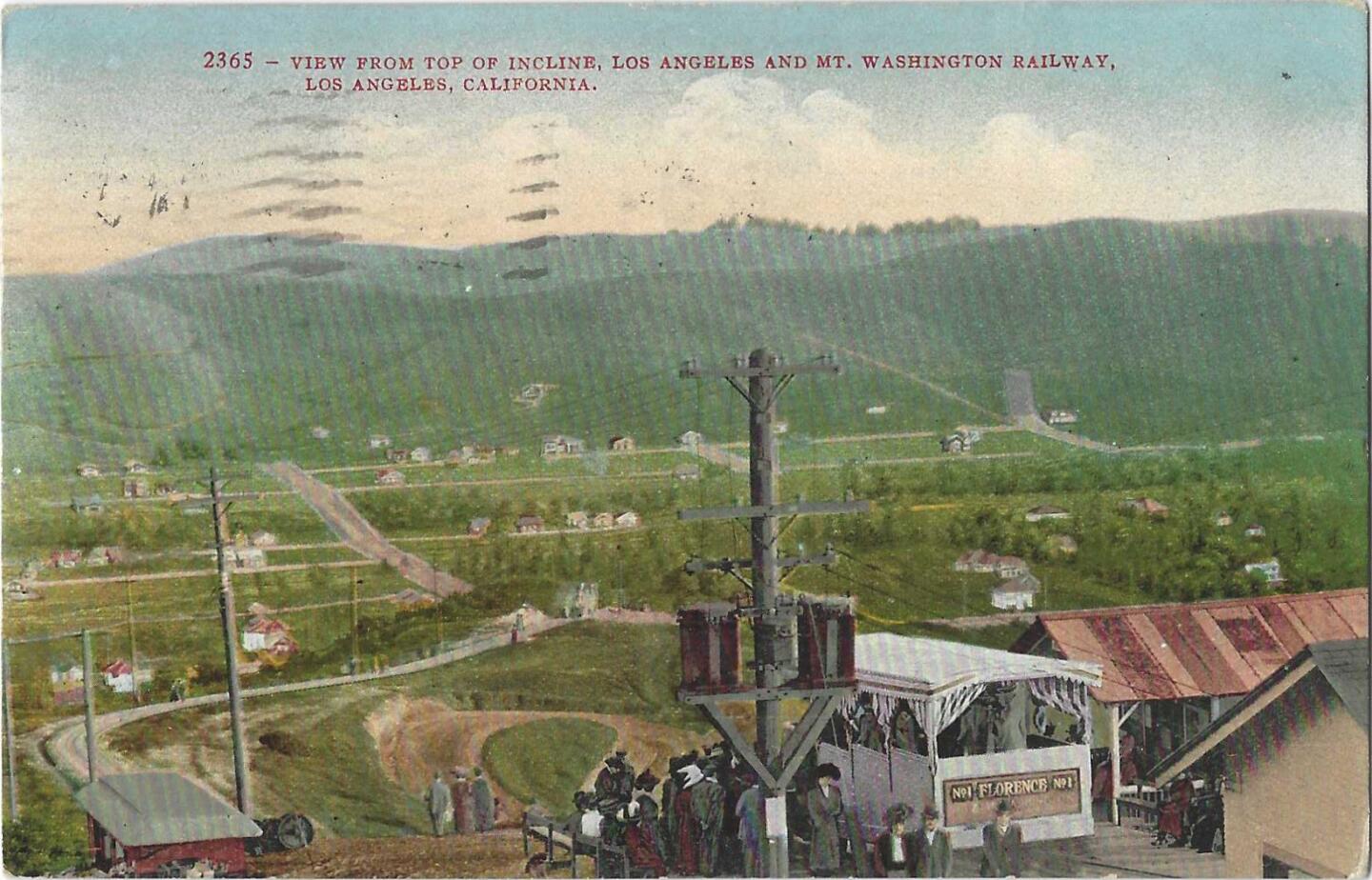
From the top of the Mount Washington rail incline, passengers could see the hills and city below. The cars were said to stop wherever residents wanted to alight. (Patt Morrison / Los Angeles Times)
Advertisement
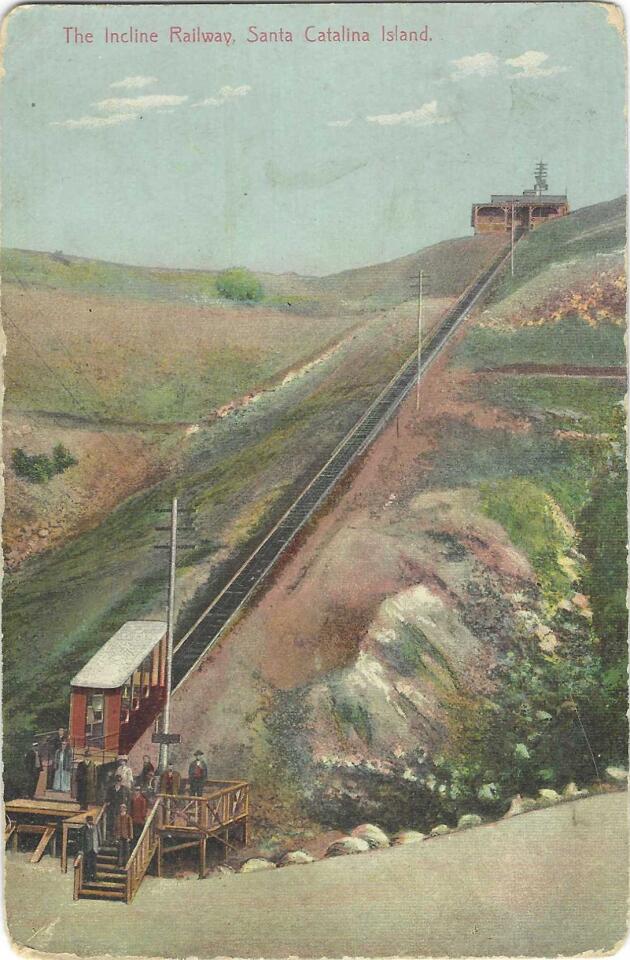
A postcard that dates to around 1910 shows the incline railway on Catalina Island. “We went up this ride and down the other. Yer Ma,” the card reads. (Patt Morrison / Los Angeles Times)
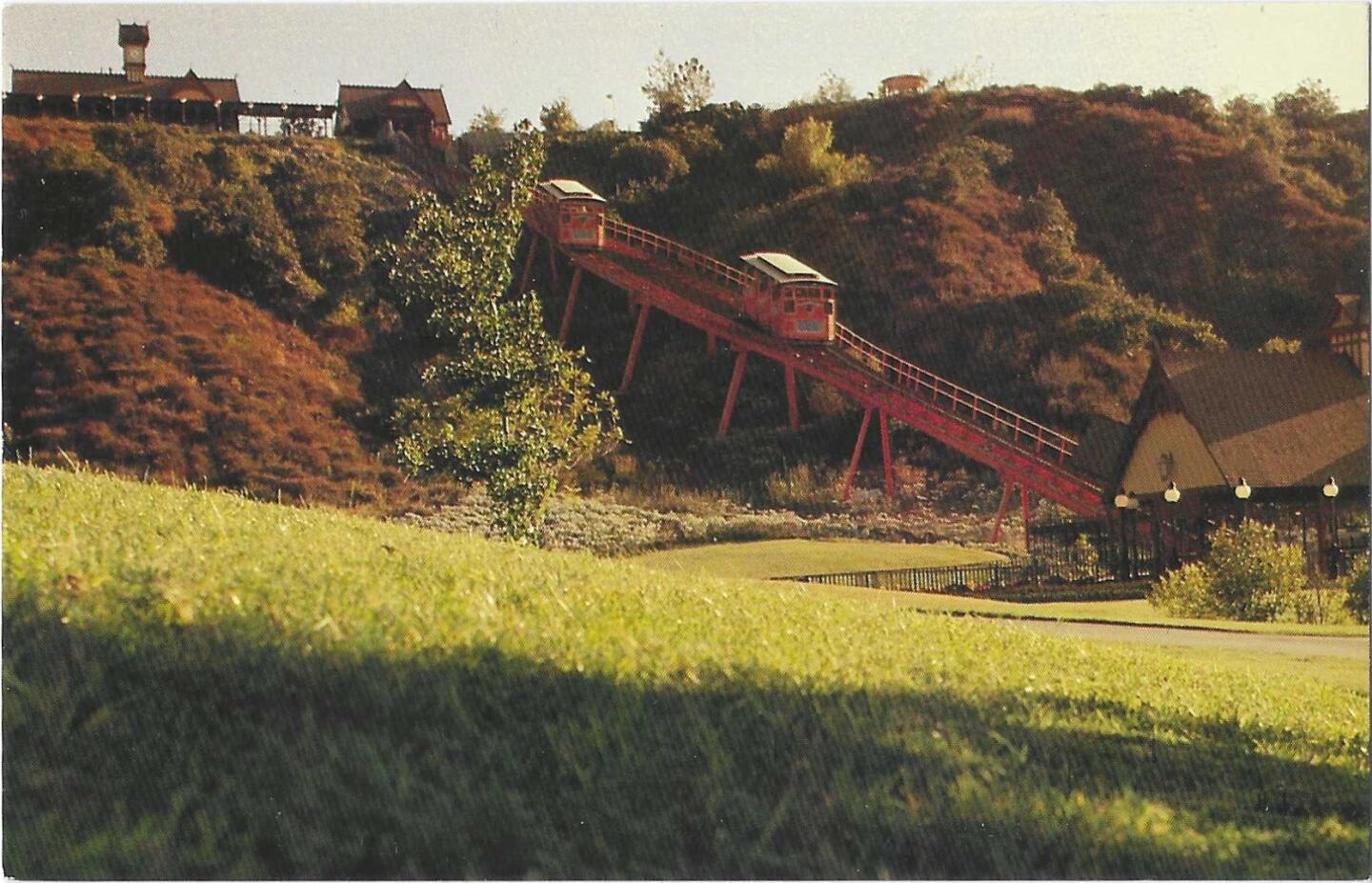
The funicular at the Industry Hills Golf Club, then the Industry Hills and Sheraton Resort. (Patt Morrison / Los Angeles Times)
